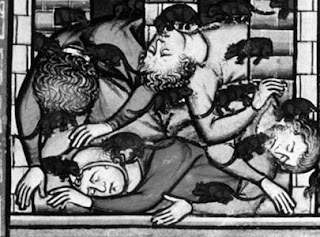Hi everyone!
This will be the last blog post for our unit! :( No need to worry about commenting this week, the information here is just to help you continue preparing and revising for the exam.
Before I get started with my exam revision tips please do take a moment to click on the following link and fill in the attached survey on the tutorial blogs. Clare and I would really value your feedback on the blog aspect of this course we have tried this year. This is the first year we have incorporated blogs into the unit and your feedback will help us improve any online teaching component included in future years. Please go on and have your say!
Click here to take survey
Remember that the exam for our unit will be held next Wednesday (May 23rd) at our usual lecture time of 10am. You will have two hours to write a 1000 word essay on the given exam question and primary source extracts. If you are unable to attend our exam time you can also write the exam at Clayton (on Monday, May 21st at 10am), or email Clare to request an alternate sitting.
In preparing for the exam you may wish to......
- Look over the mock test on Blackboard – practice creating an essay outline
- Look over all lecture notes
- Review primary sources: chronology, thematic significance, relationships between texts
- Remember your document analysis skills: The 5 ‘W’ Questions
- Create a timeline of sources
- Review key themes and how they are connected
For fun I've pasted a couple of links below to some quirky youtube history videos. One of your classmates discovered them and brought them to my attention. To me they contain the right mixture of humour, fun and geekiness that history is all about! As a revision exercise watch these videos and see what interpretations you agree with, and which you don't. Why do you agree with some and perhaps not others? What have you learned in our course to help you support or critique the arguments presented in these videos? For instance I think he's missing the boat big time on the backwardness of Europe during the 'Dark Ages' but that video is a great intro into understanding what was happening in other parts of the world during the European Middle Ages. I hope you enjoy! There are loads of videos in the series but I've just pasted three here that I think are particularly relevant to us.
Finally, as another revision exercise, I've included a medieval image below that is quite famous. Using your knowledge of the Middle Ages learned in our course what could you tell someone about the Middle Ages from looking at this image? What key themes and concepts does it combine?
 |
| God the Geometer - Codex Vindobonensis 2554 French, c.1250 |
I wish everyone the best of luck with the exam and your future history endevours! If anyone has any last-minute questions about any of the course material please let me know via email.
All the best,
Diana

















